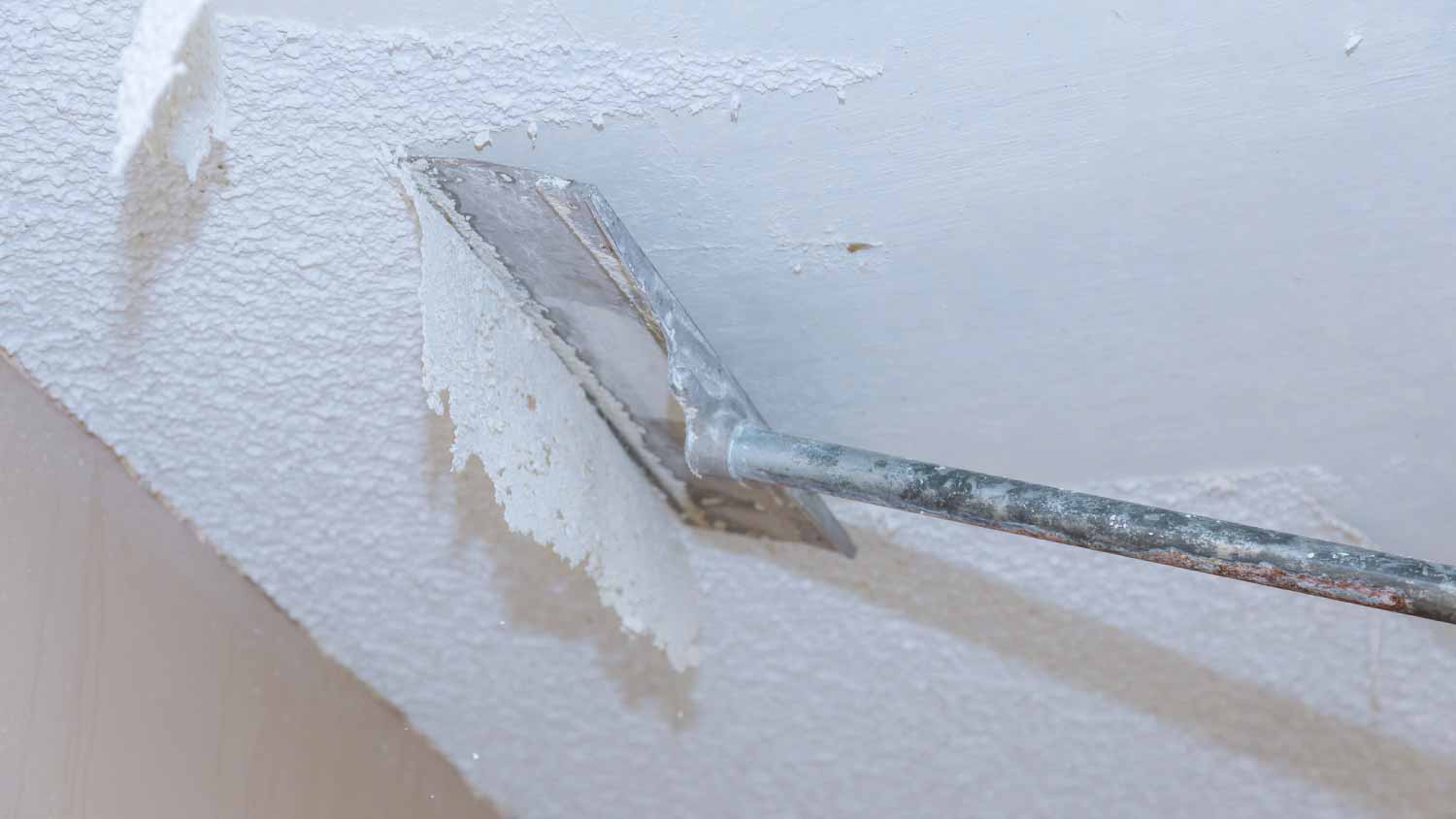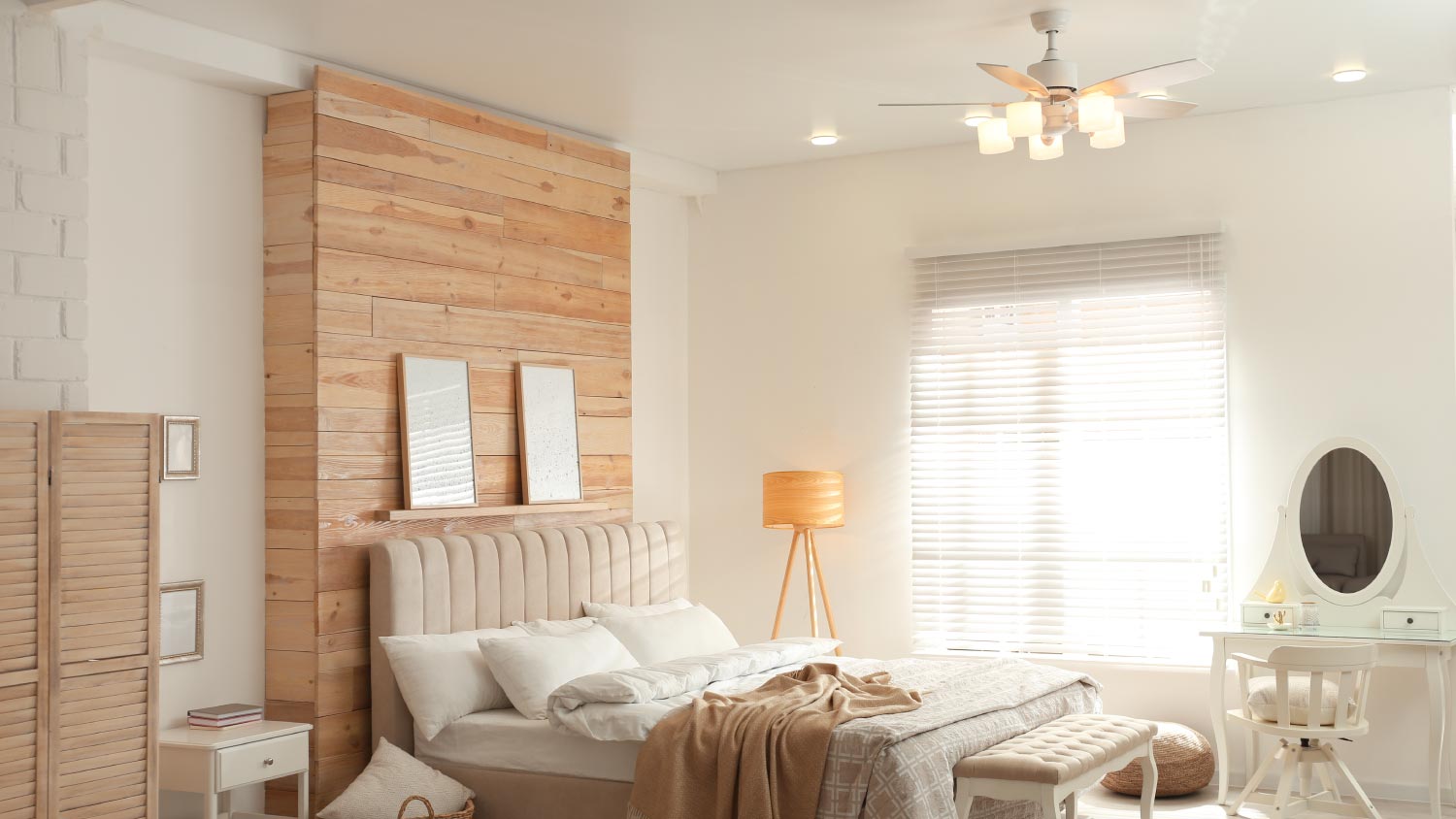
Wondering how much it costs to remove an acoustic ceiling? Get cost estimates, key factors, and expert tips to help you plan your ceiling update.
The average cost to hire an interior designer ranges from $2,058 to $15,221, with most homeowners spending an average of $8,529. Key factors include project size, designer experience, and materials.


How much an interior designer costs varies by project size, designer experience, and location.
Expect to pay $100 to $500 per hour, or 10%–30% of your project total for interior design services.
Choosing custom furnishings, window treatments, and decor over standard or stock pieces will increase costs.
Confirm which design and installation services, furnishings, and decor are included in your quote, as fee structures vary across contractors.
This article was created using automation technology and thoroughly fact-checked and edited by an Angi Editor in accordance with our AI policy.
How much does an interior designer cost? This is a common question for homeowners planning a remodel or refresh of their space. The average cost to hire an interior designer ranges from $2,058 to $15,221, with most projects averaging $8,529. Hourly rates fall between $100 and $500, while flat fees and per-square-foot pricing are also common. Your final price depends on the scope, designer experience, and material selections.
A well-designed space can improve your comfort, daily routine, and even your home’s value. This guide will break down every aspect of interior designer costs so you can plan your project with confidence.
Hiring an interior designer involves several variables that influence the final price. Let’s look at the main factors to help you plan your budget and avoid surprises.
Interior designers use a variety of pricing models, and the one your designer chooses can affect your total cost and payment schedule. The most common models include hourly rates, flat fees, per-room pricing, per square foot, and percentage of project cost.
Hourly billing is often used for consultations or small projects, while a flat fee is more common for full-service design. Some designers charge per square foot for clear, upfront pricing. For large or luxury projects, a percentage of the total project cost may be used, reflecting the overall complexity and scale.
| Pricing Model | Average Cost | Best For |
|---|---|---|
| Hourly | $100–$500 per hour | Consultations, small projects |
| Flat fee | $2,000–$12,000 | Full-service, clear project scope |
| Per square foot | $5–$17 per sq. ft. | Larger or new construction |
| Project percentage | 10%–30% of total | High-end, large, or luxury renovations |
The right pricing model for you depends on your project goals, the designer’s policy, and how involved you want to be in the process.
The overall size of your project is a major factor in how much an interior designer costs. Designing a single room costs less than a whole-home transformation. Small projects—like a bedroom or office—require fewer hours and less coordination. Multi-room or whole-home projects involve more planning, sourcing, and oversight, which increases the designer’s fee.
Keep in mind that larger projects sometimes qualify for package pricing or discounts, but they still require a bigger investment overall.
Furniture, fixtures, finishes, and decor choices can dramatically affect your total project cost. Material costs vary widely depending on whether you opt for budget, mid-range, or luxury items. Some designers manage the purchasing process for you, but their service fees usually do not include the cost of materials or furnishings.
For example, a living room with budget furnishings will cost much less than one with custom furniture or designer pieces. Material costs can easily match or exceed the designer’s fee, especially for kitchens and bathrooms.
Always clarify with your designer what’s included in their fee and set a clear budget for materials before you start.
Labor costs include the designer’s time and any subcontractors they hire, such as painters, electricians, or carpenters. Designer rates range from $100 to $500 per hour, with higher rates in major cities or for highly experienced professionals. Flat fees and per-room charges are common for more defined scopes.
If your designer coordinates contractors, expect additional project management or coordination fees—often 10% to 30% of the total project cost. Regional differences also play a role, with urban areas and luxury markets commanding higher rates. Designers with strong reputations or specialized expertise often charge more, but their experience can lead to smoother projects and better results.
Look for a combination of formal education in interior design and experience working on projects in your area. In addition to offering inspiration and the ability to articulate your design style and lifestyle needs, interior designers also collaborate with skilled trades. They can also provide project management and oversight to bring your new spaces to life.
Before the design work begins, there are often up-front costs for consultations and planning. Initial meetings can range from $200 to $800, depending on the designer’s experience and if a site visit is required. Many designers create mood boards, 3D renderings, or detailed floor plans, which can add $500 to $3,000 to your total.
Travel fees may apply if your designer is not local. Pre-design prep, such as measuring, decluttering, or minor repairs, can also create extra costs. Be sure to ask for an itemized estimate so you understand all pre-project expenses.
Tipping interior designers is not standard practice, but it’s appreciated for exceptional service or when a designer goes above and beyond. If you choose to tip, 5% to 10% of the designer’s fee is considered generous. More often, clients express appreciation through positive reviews, referrals, or a thoughtful thank-you note.
Several other factors can influence how much an interior designer costs:
Demolition or removal of old furnishings.
Post-project cleanup or professional styling.
Permit fees for structural, electrical, or plumbing work.
Upgrades to systems (electrical, plumbing) required for the new design.
Custom features like built-in cabinetry or shelving.
Decorative add-ons such as artwork installation or custom window treatments.
Delivery and installation fees for new furniture and decor.
Project timeline—rush requests or tight deadlines may add to the cost.
Discuss these details with your designer to get a comprehensive estimate before work begins.
Once your project is finished, there are a few ongoing costs to keep your space looking its best and to protect your investment.
Custom installations and high-end finishes often require regular upkeep. For example, built-in cabinetry or specialty surfaces like marble may need annual sealing, cleaning, or touch-ups that can cost $100 to $500 per year. Fine fabrics, rugs, and custom upholstery may require professional cleaning or care. Plan for routine maintenance to preserve the quality and value of your designer-selected items.
New lighting designs or smart home systems can slightly increase your monthly utility bills. Some technology—like remote-controlled blinds or home automation—may have ongoing subscription or service fees, averaging $10 to $30 per month. Replacement costs for everyday items such as pillows, rugs, or light bulbs should also be considered in your annual budget.
Custom or specialty installations can occasionally need repairs. For instance, a custom sofa or built-in shelving may require fixes that cost $150 to $1,000, depending on complexity and materials. If your designer coordinated the procurement, they may also help facilitate warranty repairs or recommend trusted contractors for the job.
High-value furnishings, art, or custom installations may require additional homeowner’s insurance coverage. Some insurers recommend listing valuable pieces separately to ensure full protection. If you’re investing in luxury items, consult your insurance provider about policy updates. Designers themselves carry liability insurance, but this covers their work—not your property.

Many homeowners consider a do-it-yourself approach when weighing how much an interior designer costs. DIY design can save money, but it comes with its own set of expenses and risks.
DIY costs include purchasing design software ($50 to $300), materials, and all furnishings. You’ll also invest significant time planning, sourcing, and coordinating deliveries. Tools and resources—like measuring devices, paint supplies, or installation hardware—add to the total.
However, DIY projects can lead to mistakes in layout, color selection, or installation, which may reduce your home’s value or require costly fixes. You’ll need a good eye for design, knowledge of building codes, and strong project management skills.
Hiring a professional often results in a more cohesive, functional, and visually appealing space. Designers can access trade discounts and have relationships with reliable contractors. While the upfront cost is higher, the return on investment and peace of mind can make hiring a pro worthwhile, especially for complex or high-value projects.
Interior design projects often include optional add-ons that enhance your space or streamline the process. Here are some popular choices and their average cost ranges:
Custom furniture design: $1,000 to $5,000 per piece
Window treatments and drapery: $500 to $5,000 per room
Lighting design and installation: $1,000 to $5,000
Art and decor sourcing: $500 to $5,000
3D renderings or virtual walkthroughs: $500 to $2,500
Home staging for resale: $1,500 to $6,000
Smart home integration: $2,000 to $15,000
Adding these services can increase your overall budget but may deliver significant value, efficiency, or market appeal.
Looking for ways to get professional results for less? Here are strategies to keep costs down:
Choose a limited-scope or consultation-only service.
Source materials and furnishings independently.
Reuse or repurpose existing furniture.
Prioritize rooms or phases to spread out costs.
Get multiple quotes from local interior designers and compare their portfolios.
Opt for emerging designers or design students.
Bundle services or negotiate package deals.
Limit custom work to key features.
Shop sales or use trade discounts through your designer.
These steps help you enjoy the benefits of design expertise while staying within your budget.
Home is the most important place on earth, which is why Angi has helped more than 150 million homeowners transform their houses into homes they adore. To help homeowners with their next project, Angi provides readers with the most accurate cost data and upholds strict editorial standards. We extensively research project costs to develop the pricing data you see, so you can make the best decisions for you and your home. We rely on reputable sources, including the U.S. Bureau of Labor Statistics, academic journals, market studies, and interviews with industry experts—all to ensure our prices reflect real-world projects.
Want to help us improve our cost data? Send us a recent project quote to [email protected]. Quotes and personal information will not be shared publicly.
From average costs to expert advice, get all the answers you need to get your job done.

Wondering how much it costs to remove an acoustic ceiling? Get cost estimates, key factors, and expert tips to help you plan your ceiling update.

Need a little extra room for clothes storage in your home? Learn about the average cost to build a closet, some cost factors to consider, and more.

Discover the average cost of tin ceiling installation, including labor, materials, and key factors that impact your budget. Learn how to save and plan your project today.

Discover the average cost of stretch ceiling installation, key price factors, and ways to save. Get transparent pricing to plan your stretch ceiling project.

Architectural details like wood molding help frame a space and add visual interest. From baseboards and door casing to wainscoting and board-and-batten paneling, read on for a rundown of all the types of trimming for your home.

There are a lot of crown molding materials to choose from, and you’ll need to know the benefits of each to know how to pick the best one for your needs.